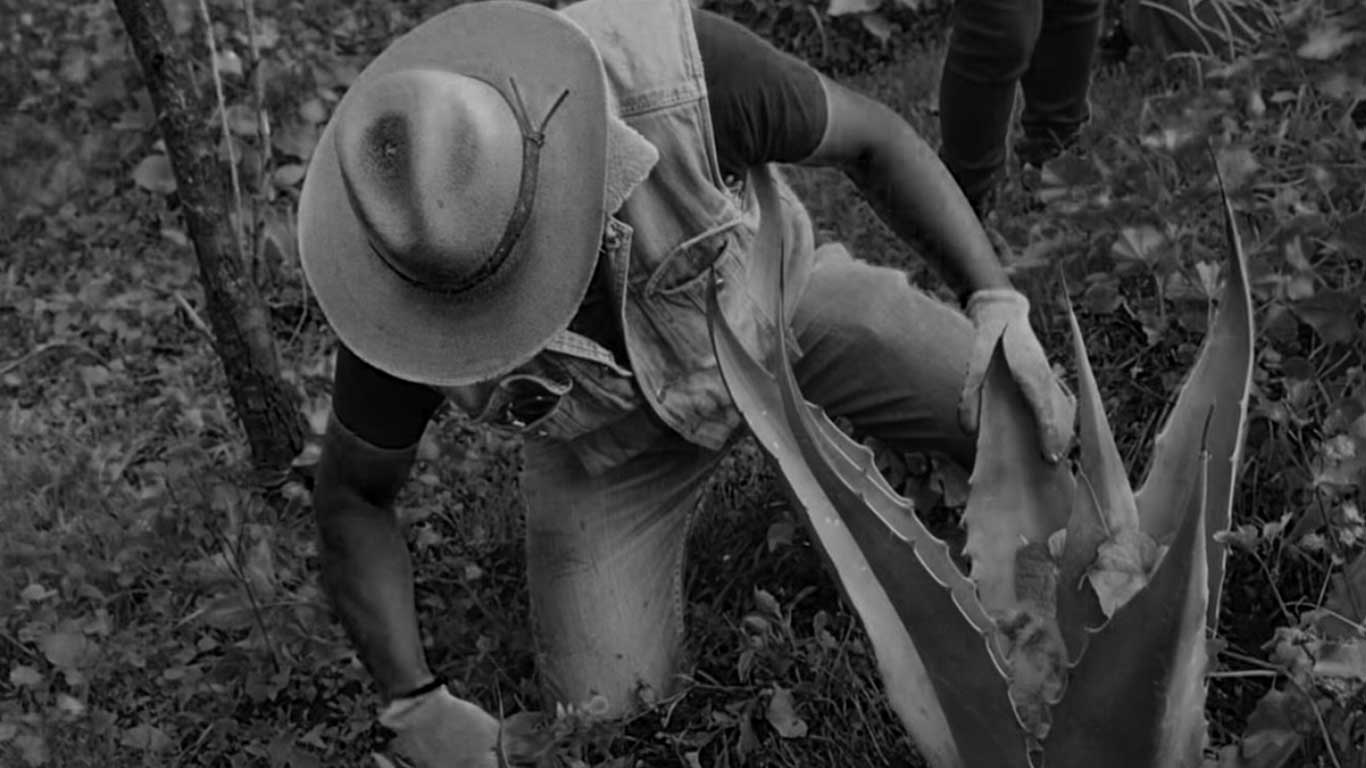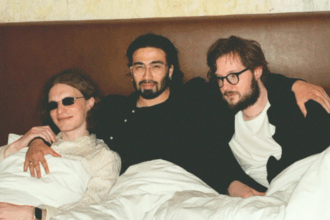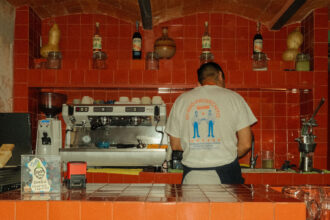Tianquiz(tli) at Sunset: Territorial Insurgency from Food
In a context where territory is reduced to a resource and food to a commodity, Tianquiz(tli) at Sunset emerges as a form of insurgency. A market that brings together producers from various peoples in resistance in the basin of Mexico.
This project is an act of political re-territorialization that demands a profound revision of our consumption practices, of our ways of inhabiting the city and, above all, of the way we understand what feeds us.
Food sovereignty is a form of autonomy.
The word tianquiztli -market in Nahuatl- refers to an ancestral exchange system that has historically sustained communal ways of life. From their role as the backbone of the economy in ancient Tenochtitlán to the present day, markets have transcended their function of providing food and goods: they are meeting spaces that weave social bonds and reinforce community identity.
Faced with the logic of the supermarket, of the algorithm, of immediate deliveries and of the "organic" as a luxury object, the Tianquiztli disarticulates the dynamics of accumulation and replaces them with relationships based on reciprocity and autonomy.
It is not structured under a business logic, but operates as a rhizome: horizontal, without hierarchies. There are no centralized authority figures. Decisions are made in assemblies, through an organizational board made up of the producers themselves. Here, every word has weight based on ethics and not on a contract.
Faced with an absent State, or one captured by private interests, this project is a form of resistance. It is territory recovered in the heart of the city, by the same people who dedicate all their efforts to keep it green.






La Remigia and Crescen de la Tierra, projects that have kept Xochimilco and Milpa Alta alive.
From the body to the earth
Food sovereignty is not limited to deciding what we eat. It implies the real possibility of building territories where food can be grown and circulated without violence, dispossession or contamination. As Juan Medina puts it from Sabor Rural -one of the Tianquiztli's organizational axes-, it is also about defending and caring for the body as the first territory.
Many of the people involved do not come from farming families. They are professionals, activists, academics and urban people who, out of urgency or intuition, have chosen to move away from the model of life imposed by the dominant system, to plant, raise, ferment or transmit knowledge from political, basic and ancestral food practices.
The stories are many. The collective La Remigia supports a goat farm in San Salvador Cuauhtenco, one of the last living edges of Mexico City, today threatened by urban sprawl. These are cases in which even the previous training, as in the case of Adán Caldiño, lawyer and pastor, is put at the service of the care of the territory and the dialogue with local policies. Mezcal ResiXtencia is an agroecological and educational project led by Teresa Martínez, a rural teacher in Oaxaca, which links traditional knowledge with pedagogical processes in rural communities. Initiatives such as La Nopalera y El Pilar transform nopal, corn and maguey not only as raw materials, but also as symbols of dissidence.
They are undertakings, yes, but not within the industrial context: they are bets for another economy, where to produce is to defend life.

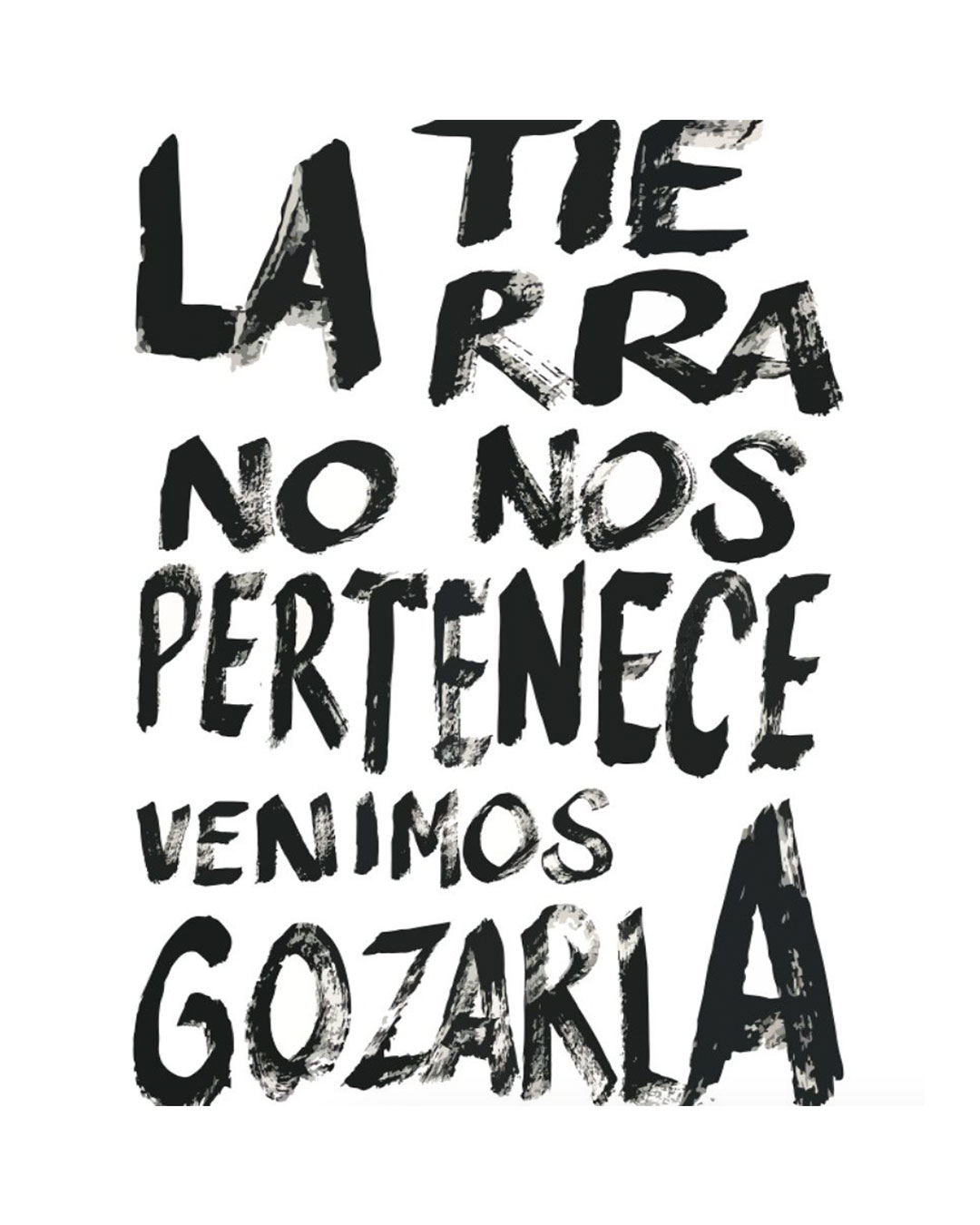

Inaugural edition of Tianquiztli at Sunset at the Museo de Arte Carrillo Gil. Images courtesy of Colectivo Amasijo.
Appreciating food also requires an act of conscience. As Paloma Díaz-Mas writes in El pan que como ( 2022), in the Japanese word Itadakimasu there is not a simple wish of "bon appetit" but a declaration of gratitude: to those who sowed, cooked, transported, and also to the living beings whose lives were interrupted to nourish our own. To eat is to receive. It is a gesture of humility before the complexity and the network of efforts that make each dish possible.
In this case, each product is accompanied by a story, by a face, by a work ethic that goes beyond the logic of production to enter into a policy of care. The time, life and respect involved in the process of bringing it to the table is noticeable.
Art and affection
Another of the radical gestures of the Tianquiztli is how it has used art not only as a tool for visibility. Since its beginnings -prompted by Amasijo Collective- the market has been embraced by cultural institutions, such as the Carrillo Gil Art Museum, Marso Foundationand, now, twice a month, at the Public Projects. The objective is to accompany the market with a creative aspect, although here the art does not decorate, but accompanies, discomforts, listens and questions.
It is a common language that recognizes the stories contained in a seed, in a fermentation or in the nopal, with the purpose of linking with a more conscious consumer, and at the same time encourages social participation, opening it to workshops, round tables, and dialogue circles. This so that attendees can leave with more than just a shopping basket, but with an idea or a question planted in their heads: what is our role as consumers?
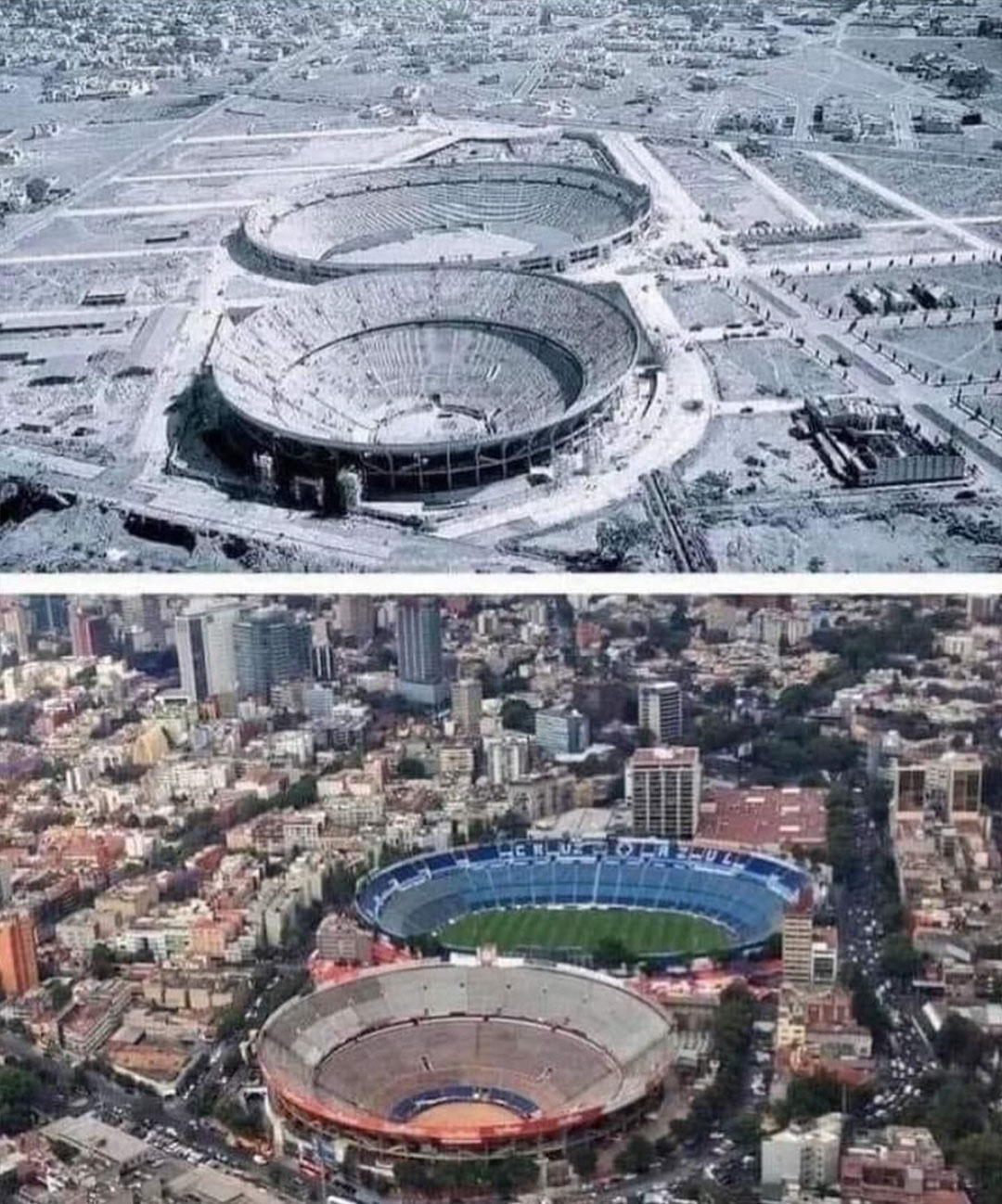
Comparison of the Estadio Azul and the Plaza de Toros, in 1945 and today.
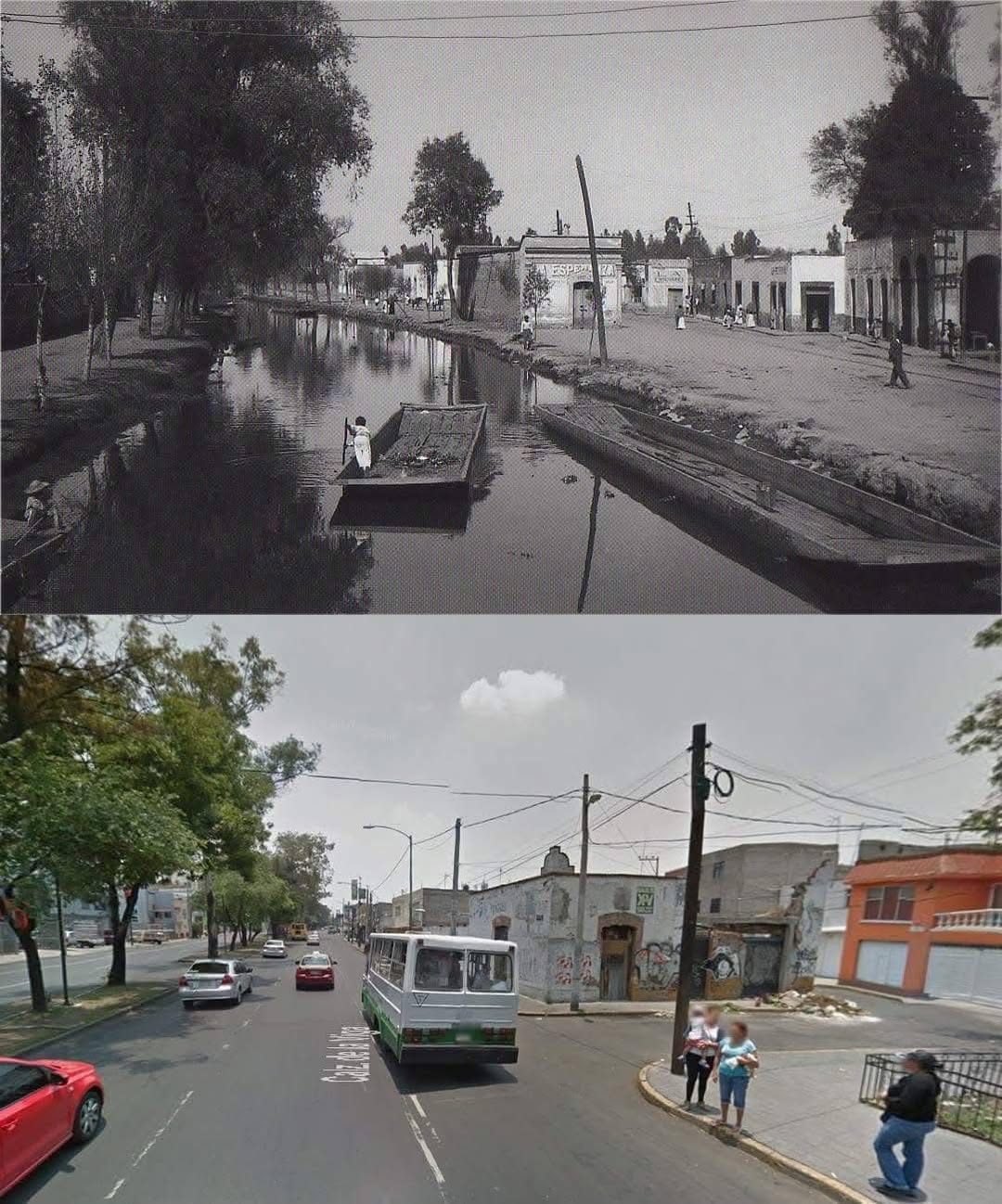
The Canal de la Viga was the last great navigable canal in Mexico City, and was buried under concrete to become a vehicular roadway between 1921 and 1940.
The city as a field of dispute
The defense of conservation land and the cornfield cannot be sustained without an allied and committed urban citizenry. It is in the city where the value of what we eat is negotiated. Here it is decided whether agroecological food will be understood as a luxury or as a right. It is here that the hegemonic narrative that justifies rural devastation is constructed or destroyed. It is important to understand that there is no countryside without a city, and no city without a countryside.
Feeding, then, ceases to be an automatic act and becomes an ethical question: what world are we reproducing every time we eat and shop?
Map of urban growth in Mexico City, 2020. (file based on photointerpretation, ArcGis Software version 10.3.)
At Proyectos Públicos we believe in a culture that is cultivated on a daily basis. This alliance with Tianquiztli at Sunset is part of our commitment to practices that link awareness, territory and sustainability. Throughout 2025, the Tianquiztli will be every two weeks from 17:00 to 21:30 hrs in our premises, with free admission, workshops and parallel activities open to the public.


